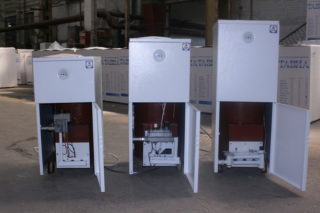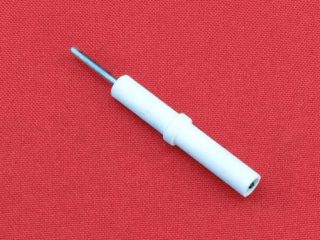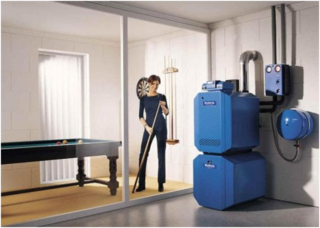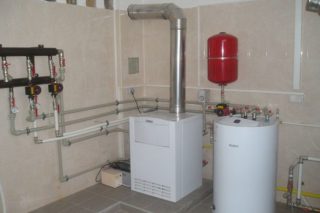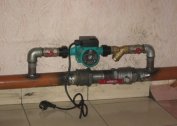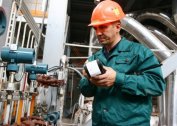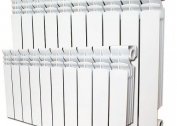A non-volatile gas boiler is used to produce thermal energy by burning gas to heat objects (premises). Propane-butane or methane is used as gaseous fuel during unit operation. Boilers are installed only for heating or additionally heat water in the water supply system. The equipment is available in floor and wall type.
The principle of operation of a non-volatile gas boiler
When the fuel is supplied, piezo ignition is switched on, the igniter ignites from the spark, which will burn constantly. If the ignition device does not work, gas cannot be supplied, since an explosion may occur. The pilot burner ignites from the igniter, heating the water to the desired temperature in the heat exchanger. Automation turns off the gas after reaching the set result. The temperature sensor regulates the supply of a new portion of fuel when the temperature drops, and the main burner ignites again.
If there is poor draft in the chimney or the air flow is not properly organized, part of the carbon monoxide remains in the room. It is dangerous and causes poisoning by toxic carbon monoxide. A non-volatile gas-fired boiler requires a chimney with a ratio of incoming air volume to the amount of exhaust products of combustion 10: 1. Non-volatile units operate without electricity due to the presence of two burners in the design.
Types of boilers
Gas units are hung on a load-bearing wall, located on the frame. Massive models are installed on the floor or require an additional base device. The heating, water supply and hot floor circuits are connected to the equipment.
Single-circuit and double-circuit
Non-volatile gas boiler for heating a private house works only for heating or additionally heats water in the built-in tank. It depends on how many circuits it serves. When heating a house, a hot coolant enters the pipeline. He goes through all the registers in the house and returns to the boiler. This is how a single-circuit system works, it is used for non-residential facilities, summer houses, workshops.
In double-circuit units, a heat exchanger of a different structure is built in. In the pipe through which the coolant passes, another one is inserted with a liquid for the water supply. Streams move in one direction. From the combustible gas, the energy is first transferred to the filler of the heating system, and it heats the water for domestic purposes.
Flow or built-in heat exchangers are:
- bithermic coaxial;
- separate lamellar.
Floor models of boilers can have 2 heat exchangers, where heating fluid and water for domestic hot water are heated in different tanks. Such aggregates take up more space, but less scale is formed in them. The circuits operate separately and are switched off independently of each other. They are used in private one-story and two-story buildings.
Floor and wall
Floor units are mounted on the floor or platform. Structural elements for strapping are purchased separately.
Steel fire tube boilers differ:
- increased power indicators;
- high efficiency.
The heat exchanger is made cylindrical in shape with welds. The design consists of metal pipes and the combustion chamber of the air-gas mixture.The combustible mass is prepared and fed by a blast burner.
Cast iron units have a heat exchanger made of an alloy of iron with sectional carbon. It contains blast or tubular burners. Cast iron boilers are distinguished by their high weight and long service life. Due to the fragility of the material, special requirements are imposed on the temperature regime.
Wall models are characterized by reduced power, compactness, mounted on a vertical fence or stationary frame.
Advantages of suspended boilers:
- space saving;
- sale of strapping elements simultaneously with the unit.
Wall-mounted equipment is a mini-boiler room with remote control. The boilers have a copper or steel heat exchanger in which a tube burner is mounted.
Advantages and disadvantages
Non-volatile gas units are characterized by efficiency and economical fuel consumption. In boilers, automatic protection is provided when the gas supply is cut off, the pressure of the liquid in the system is reduced, and the draft disappears.
The advantages of non-volatile equipment
- high power;
- independence from the electric network;
- durability and reliability;
- ease of use;
- the possibility of quick repair;
- the likelihood of using a chimney from a previously dismantled solid fuel boiler or stove.
Restrictions for the installation of gas equipment relate to the choice of a separate room. For a dual-circuit system, additional space is required for the installation of a security system, pump, heating tank. The installation cost rises due to weight and dimensions, the assembly of regulatory automation in the design, the alignment of the base. A gas permit is required.
Non-volatile boiler selection
The choice depends on the purpose of the object and the financial capabilities of the buyer. There are other parameters that you pay attention to before purchasing the unit.
Technical characteristics are taken into account:
- Power. If the indicator exceeds the room's need for heating, excess fuel is consumed. For double-circuit boilers, 25% of the area of the house for the needs of hot water is added.
- The number of circuits. Depends on the purpose of the building. In medium-sized residential buildings, double-circuit units are installed, and single-circuit units are suitable for auxiliary buildings. If the cottage is large, a water heater is additionally mounted to the boiler.
- Heat exchanger material. Steel models save money, but cast iron is chosen for long-term operation.
- Gas consumption. Models have different burning intensities and different efficiency.
- Temperature limit of operation. Gas units heat water to +80 - 90 ° C.
- Coordination and management system. Automation provides independent operation of the unit without human intervention.
The design and dimensions of the installation are selected depending on the preferences of the user. There are a large number of sizes, but the appearance does not affect the quality of functioning.
Rating
Most of the boilers offered are manufactured abroad. The leading place is given to Germany, Italy, Slovakia, Belgium, South Korea.
Popular quality models:
- Protherm Cheetah. Wall-mounted model of a dual-circuit unit with a power of 23.3 kW. Efficiency is at the level of 90.3%, heats the house up to 200 m2. The compact unit weighs 31 kg.
- Ferroli Domina N F24. Non-volatile model with a capacity of 23.5 kW. Bypass equipment with a closed chamber. Heats the area up to 180 m2, efficiency - 93%.
- Baxi Slim 1.300 iN. Floor design with cast-iron heat exchanger. It is possible to connect an external boiler and underfloor heating system. A built-in outside temperature meter is provided, which facilitates the operation of automation. Heats up to 365 m2.
- Ariston GENUS Premium EVO 24 FF. Wall-mounted dual-circuit model with a display and control on the front panel. Gas consumption is not more than 2.5 m3 per day. Stainless steel heat exchanger, it is possible to connect a pump and a forced fan.
- Navien GA 35 KN. The device of small mass and dimensions is equipped with connecting pipes on both sides. Convenient control, instruction in Russian. The unit operates quietly, internal elements operate reliably and for a long time.
Models of well-known manufacturers take into account the conditions of the Russian climate and work efficiently.
Design Features
 Units are divided into devices with natural and forced traction. In the first variety, an atmospheric burner and an open combustion section are provided. Air comes from the room where the boiler is installed, smoke is removed due to the natural movement of air. The equipment is installed indoors in compliance with safety standards.
Units are divided into devices with natural and forced traction. In the first variety, an atmospheric burner and an open combustion section are provided. Air comes from the room where the boiler is installed, smoke is removed due to the natural movement of air. The equipment is installed indoors in compliance with safety standards.
In compulsory action units, air is taken from the street or the next room (less often). The flows are moved by the fan along coaxial or separate air ducts of small diameter. There is the possibility of organizing the removal of combustion products in a horizontal plane through the wall. Forced equipment is installed in any suitable room.
Features of installation and operation
Non-volatile gas-fired heating equipment is mounted in the system so that the coolant circulates naturally without the use of a pump. For this, the following conditions are met:
- the design slope of the main with coolant is maintained;
- pipes of a larger diameter are used so that the resistance in the path of the liquid decreases;
- an expansion tank is built into the system where excess hot water is located.
When installing adhere to the rules for installing gas boilers. The regulations also apply to ventilation and exhaust systems. Installation of equipment is allowed to persons who have access to such work and have passed accreditation.
